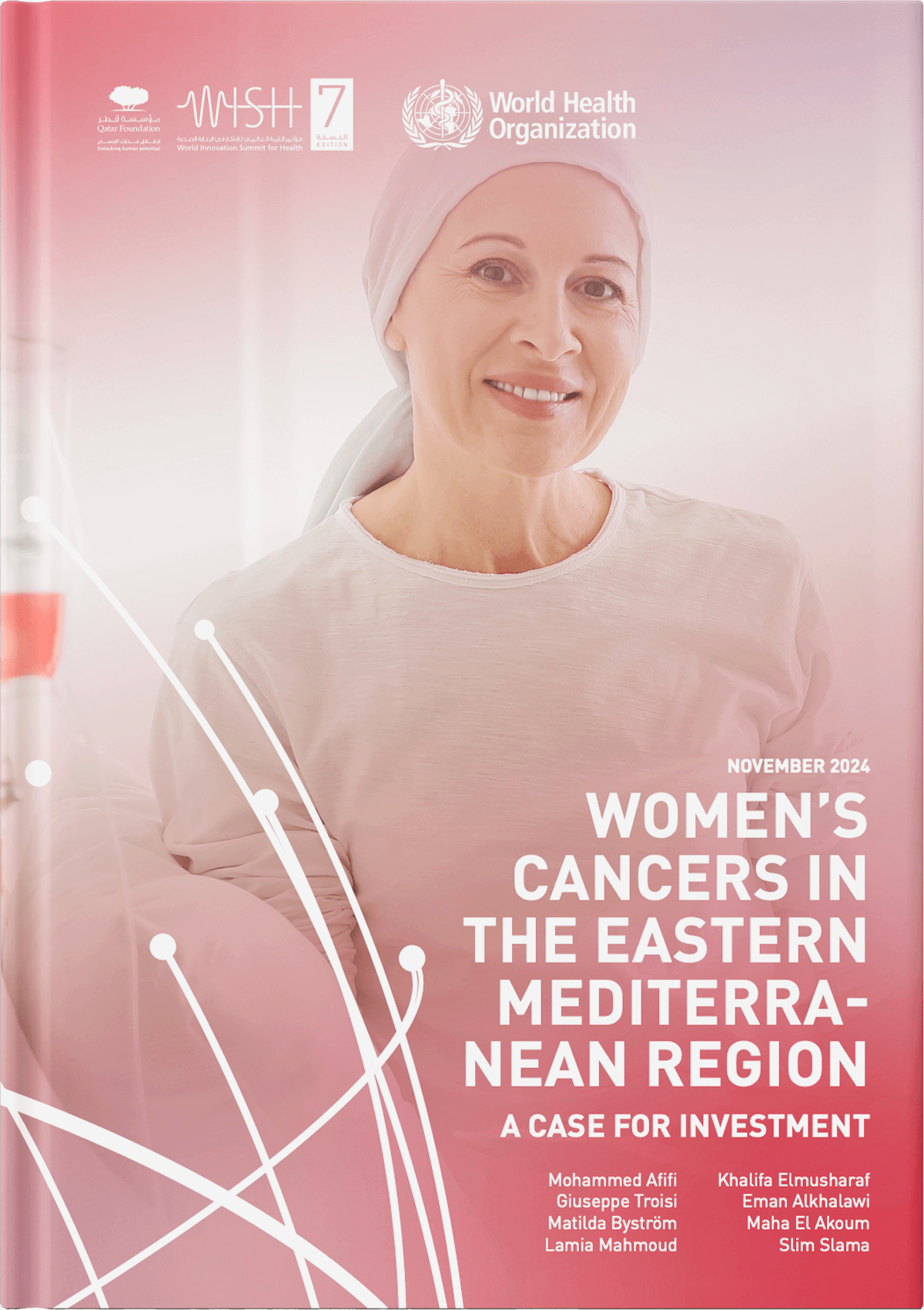
Executive Summary
Breast cancer is the most common cancer among women in the World Health Organization (WHO) Eastern Mediterranean Region (EMR), with around 130,000 new cases and 53,000 deaths in 2022. Cervical cancer also poses a significant challenge, with nearly 17,000 new cases and 11,000 deaths within the same year. The societal and economic burden of these cancers is dramatically high, due to resource limitations, low awareness, sociocultural barriers, and health system disruptions due to conflict and instability in many EMR countries and territories. Breast cancer also has the highest age-standardized incidence rate of all cancers in both sexes combined, which results in women dying prematurely (that is, before the age of 70 years), with their lives and livelihoods being disproportionally affected compared to men.
Breast and cervical cancers represent substantial public health and health equity issues, yet they are largely preventable. Governments across the globe have showed increasing interest and commitment to countering this trend, and have demanded tailored economic evaluation to guide decisions and prioritize the most cost-effective interventions. As a response, the WHO Regional Office for the Eastern Mediterranean (EMRO) developed a regional investment case on women’s cancers, quantifying their significant socioeconomic burden, as well as the economic return from investing in evidence-based cost-effective interventions.
According to the investment case, the economic burden of both cancers was $15 billion in 2020, and is expected to accrue to $379 billion by 2040, with premature mortality accounting for 96.4 percent of this burden. However, the investment case also displayed significant health and economic benefits from scaling up cost-effective interventions, generating an 82 percent decrease in incidence and high return on investment (ROI) as a result of human papillomavirus (HPV) vaccination – between $2 and $6 gained for each dollar invested. Comprehensive treatment interventions for breast cancer are projected to reduce mortality by 26 percent and to yield almost $8 for each dollar invested.
The study highlighted key recommendations, including:
- Significantly increase investments in scaling up cost-effective interventions – especially HPV vaccination, early detection programs, and comprehensive treatment of breast and cervical cancer – and design programs according
to country context. - Address bottlenecks across the continuum of care and maximize efficiency using and strengthening existing women’s service delivery platforms.
- Invest in data systems to better plan and regularly monitor progress and evaluate program performance.The time to act is now. There is a critical need for a co-ordinated, well-resourced approach to tackle the growing burden of cervical and breast cancers in the EMR, emphasizing the economic and health benefits of early intervention and integrated healthcare strategies. By investing in proven, cost-effective measures now, we can create a future where fewer women in the EMR suffer from these preventable cancers, ultimately transforming the landscape of women’s health in the region for generations to come.
